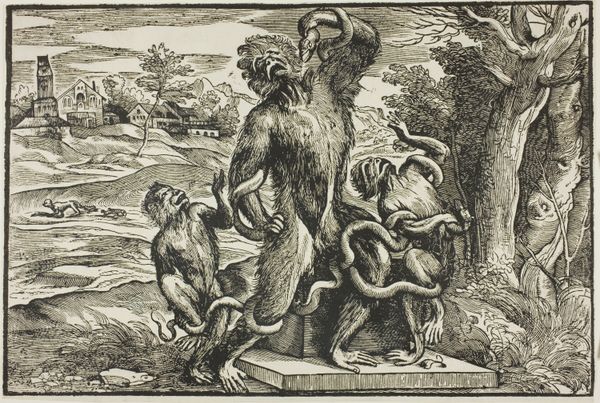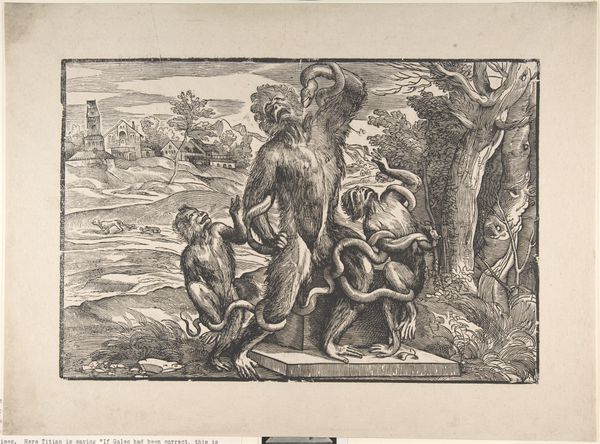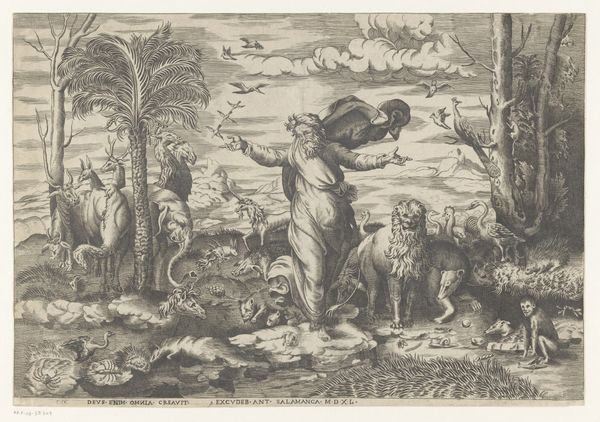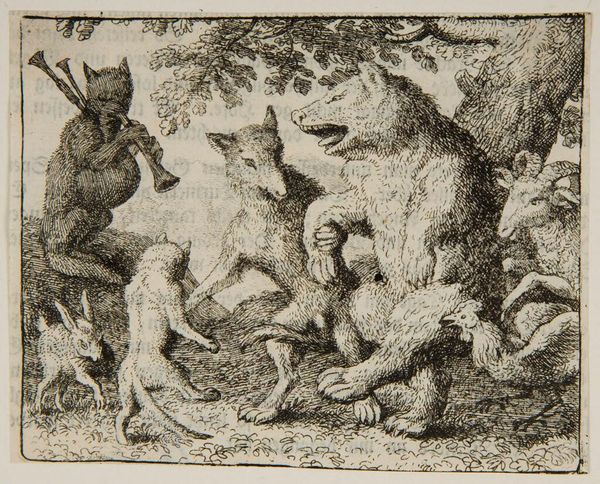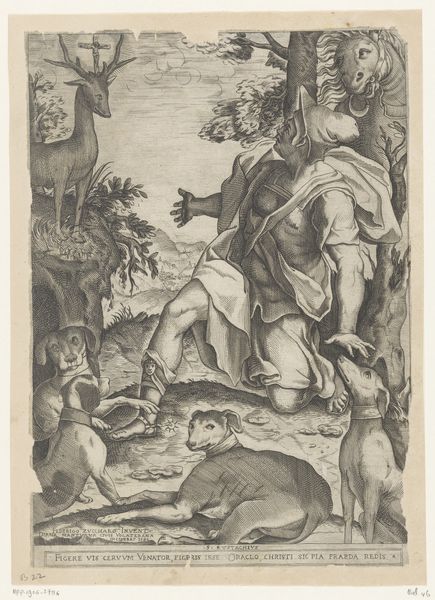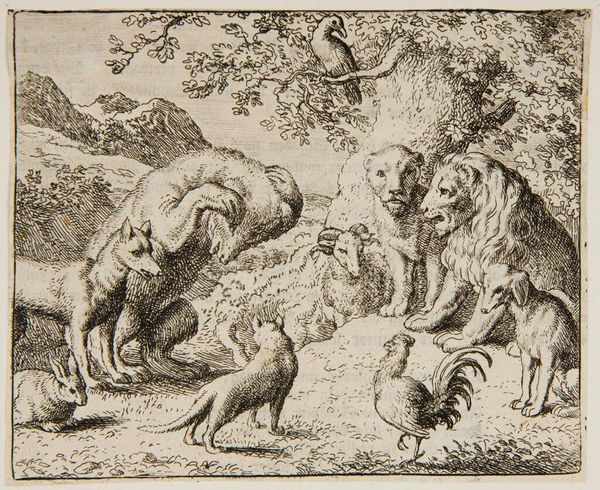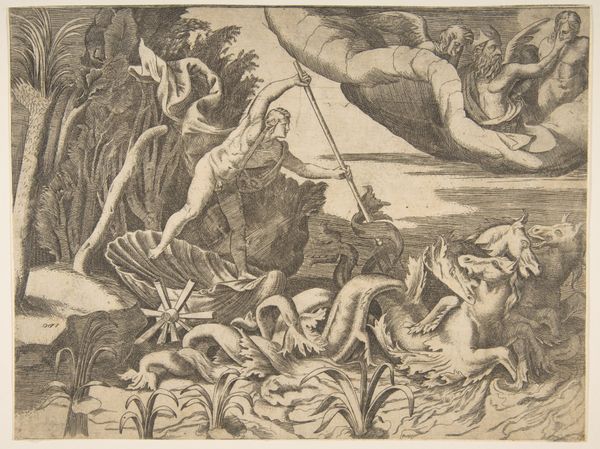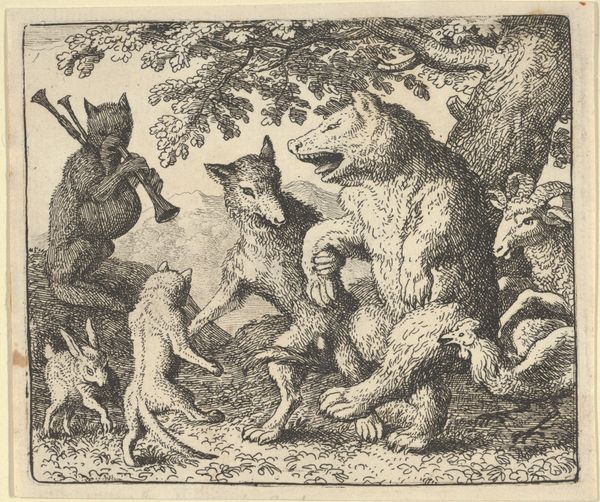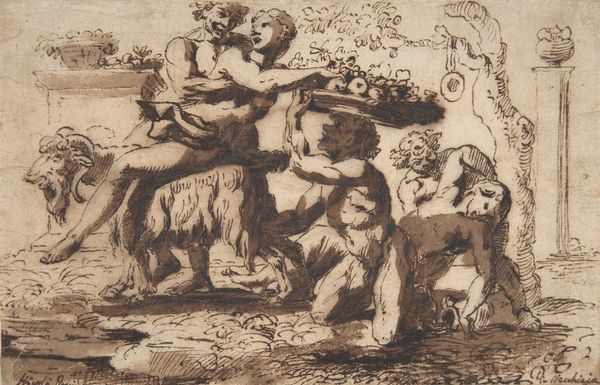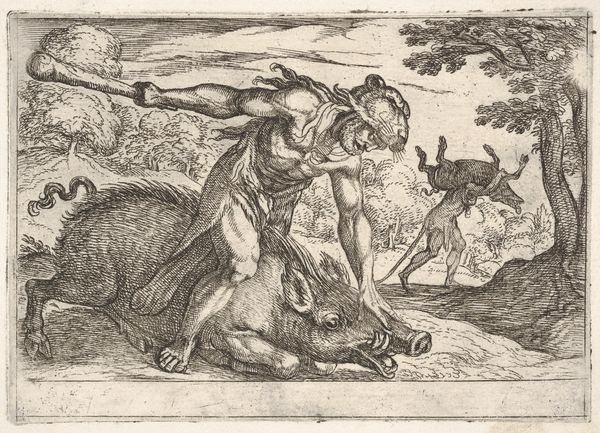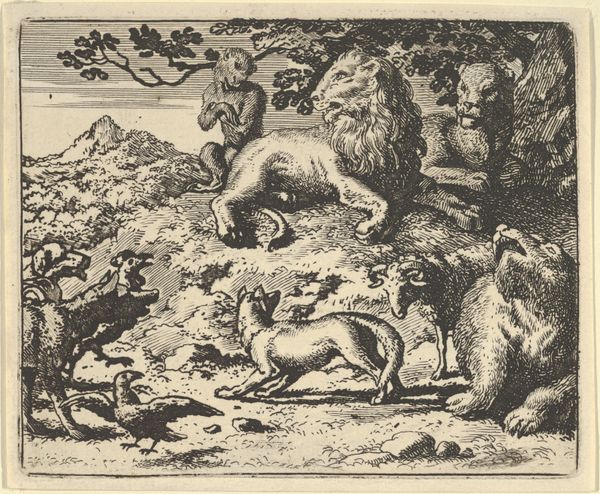
Caricature of the Laocoön c. 1540 - 1545
Dimensions: block: 29.3 Ã 42.6 cm (11 9/16 Ã 16 3/4 in.)
Copyright: CC0 1.0
Curator: Nicolo Boldrini's "Caricature of the Laocoön," located at the Harvard Art Museums, presents a rather peculiar scene. What's your immediate take on it? Editor: Utterly bizarre! It's like a grotesque satire. The figures, seemingly apelike, are contorted in agony. The whole scene feels… mocking. Curator: It is, isn't it? Boldrini cleverly subverts the classical Laocoön, a symbol of suffering and heroic resistance, replacing the figures with apes. What do you think this substitution suggests about the public role of art at that time? Editor: Perhaps Boldrini is commenting on the perceived pretentiousness or the elevated status of classical art. By transforming it into something absurd, he democratizes it, bringing it down to earth, so to speak. It definitely highlights the politics embedded in imagery. Curator: It's a powerful deflation of established iconography. By tapping into the readily understood image of Laocoön, he provokes questions about the cultural significance we assign to certain figures and narratives. Editor: Absolutely. It makes you wonder about the societal values being critiqued through this comical distortion. I find it unsettling and fascinating. Curator: Indeed, Boldrini's caricature challenges us to reconsider the weight we place on cultural icons. Editor: A memorable distortion offering many avenues for interpretation!
Comments
No comments
Be the first to comment and join the conversation on the ultimate creative platform.

